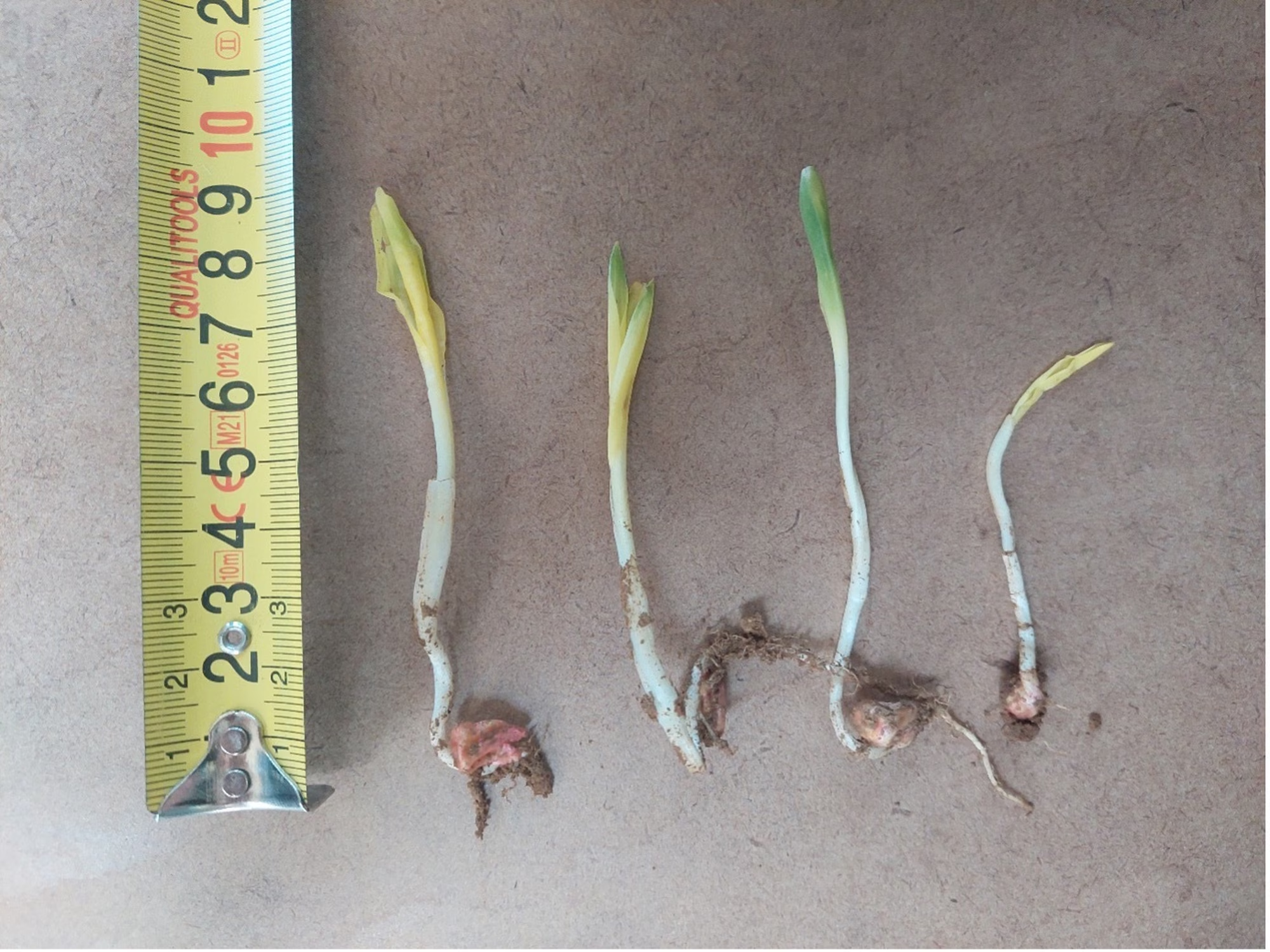Planting your sweetcorn at the correct depth is critical for maximising yield potential. The correct planting depth is essential for proper root development, growth and uniform crop maturity. The question that many farmers are faced with, however, is what exactly is the correct seeding depth?
Once sweet-corn seed is planted, the seed absorbs water to start the germination process. At this stage, it is of utmost importance to keep the soil moist to aid good seed germination. The first structure to emerge from the seed is the radical root. After emergence of the radical, the coleoptile protective sheath emerges, followed by the lateral seminal roots. The radical and lateral seminal roots make up the seminal root system.
Planting too shallow can result in poor development of the nodal root system, resulting in reduced water and nutrient uptake, and plant lodging. Reduced access to nutrients and water can stress plants, resulting in poor plant health and lower yields. Plants tend to lodge when the nodal root system is poorly developed, providing inadequate support to this tall, leafy plant. The top layer of sandy soils also dries out quicker than heavier clay soils, resulting in poor emergence due to a lack of moisture.
Planting too deep can result in exposure to cooler soil temperatures and delayed emergence, because the seedling requires more time and energy to emerge. Sweetcorn is especially vulnerable at deeper planting depths due to the lack of energy stored inside the seeds. At deeper planting depths, the cooler soil can result in a delay in germination and increased exposure to soil disease and insect damage.
Sweetcorn is sensitive to cold soils and requires soil temperatures of 10ºC or above for germination. It is essential to check soil temperature at the proper planting depth before planting. Delayed emergence can result in delayed flowering, silking, maturity and harvest. Plants that germinate later also experience more competition from older plants that emerged earlier, leading to weaker plants with poor yield potential.
Planting depth should be checked on a regular basis, especially when moving between different soil types. As a rule, planting depth should be deeper in sandy soils and shallower in heavy clay soils. This has to do with the ability of the soil in question to retain moisture. The time of year and climate also play an important role. In cooler months, seeds can be planted at a shallower depth as the soil temperature is higher closer to the surface. There is also less evaporation and soil tends to stay moist for longer.
As the season warms up, planting depth must be increased to compensate for higher temperatures and greater evaporation. Keeping up with irrigation is very important until the seedlings have emerged above the soil surface. The ideal planting depth for sweetcorn ranges between 3 cm and 5 cm. Planting at a shallower depth than 3 cm increases the risk of poor root development and seeds drying out due to a lack of moisture. Planting any deeper than 5 cm increases the risk of slower and uneven emergence, leading to a poor plant population.

Checking planting depth form the soil service to the top of the seed.

Seed that was planted too shallow resulting in poor root development.

Seed that was planted too deep resulting in late emergence and poor plant population.

A typical example of incorrect planting depth (too deep) causing poor emergence and plant population resulting in yield loss.